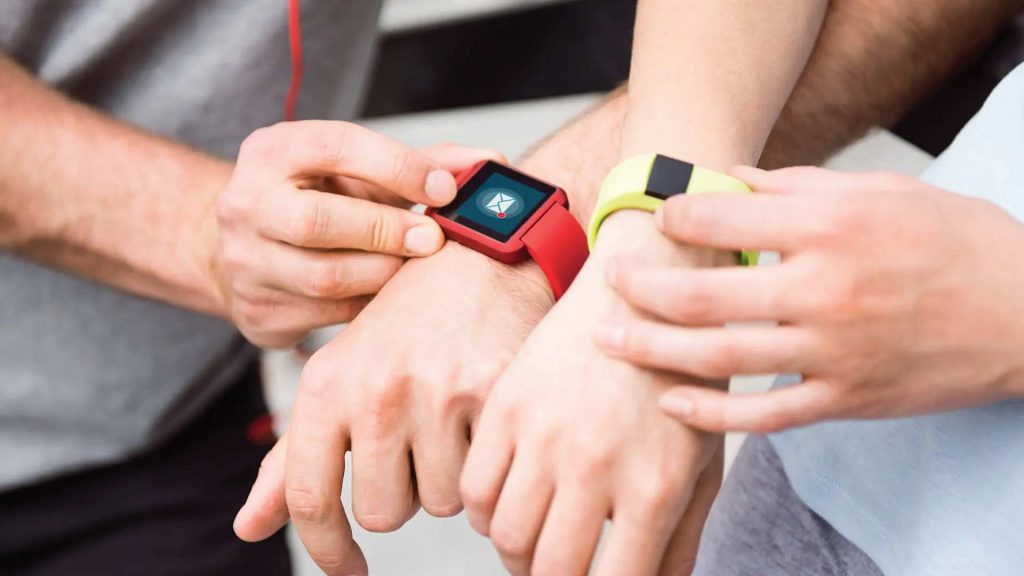The wearable technology sector continues to prove its potential across various industries. Advancements in sensor technology are making such products more appealing in industrial application, in healthcare and consumer electronics. Generally, wearable devices are a category of electronic devices that can be worn as accessories, embedded in clothing, implanted on the user’s body, or even tattooed on the skin. The devices are hands-free gadgets with practical uses, powered by microprocessors and enhanced with the ability to send and receive data via the Internet. Furthermore, the rising popularity of connected devices and the Internet of Things (IoT), as well as the rapid growth of a technologically literate population globally, are anticipated to fuel the demand for wearable technology. Overall, according to data provided by Grand View Research, the global wearable technology market size was valued at USD 40.65 Billion in 2020 and is expected to expand at a compound annual growth rate (CAGR) of 13.8% from 2021 to 2028. Nemaura Medical Inc. (NASDAQ: NMRD), Garmin Ltd. (NYSE: GRMN), DexCom, Inc. (NASDAQ: DXCM), Masimo Corporation (NASDAQ: MASI), Abbott Laboratories (NYSE: ABT)
The healthcare industry is a key factor in the projected growth of wearable technology. Recent advances in sensors and artificial intelligence (AI) are helping millions detect and manage chronic health conditions and avoid serious illness on devices small enough to be worn on a wrist or a penny-sized patch. A repot by Deloitte predicts that 320 million consumer health and wellness wearable devices will ship worldwide this year, and by 2024, that figure will likely reach nearly 440 million units as new offerings hit the market and more health care providers become comfortable with using them. For example, “heart rate monitors are now standard on most smartwatches, and some have FDA approval for detecting abnormalities such as atrial fibrillation, a major cause of stroke. As these devices get more sophisticated, the percentage of consumers using them to manage chronic conditions and detect symptoms of serious diseases will likely increase,” the report explains.
Nemaura Medical Inc. (NASDAQ: NMRD) just announced breaking news that, “it has been granted a UK trademark for ‘Meta Score,’ a term the Company plans to use as a digital biomarker for its consumer metabolic health program. Trademark applications are now pending in several other major global territories.
Meta Score will be the metric and digital biomarker the Company will use as part of its consumer programs. This digital biomarker will derive output from Nemaura’s glucose sensor in combination with a number of behavioral inputs of users. These consumer programs target the pre-diabetes and obesity markets, with over 87 million people in the U.S. alone with pre-diabetes.
‘We believe that owning the description of measurement for the biomarker utilized in the Miboko program is an important differentiation among all of the various metabolic health programs currently available,’ commented Nemaura CEO Faz Chowdhury, Ph.D. ‘While there are many medical measurements that doctors rely on to understand a person’s metabolic health, by creating and branding a simple-to-describe score we have created a means to easily track metabolic health and demonstrate progress while using our sensor that is easy to wear.’”
Garmin Ltd. (NYSE: GRMN) reported back in April the vívosmart® 5, a comfortable, easy-to-read smart fitness tracker with Garmin’s most advanced sleep features, including sleep score. Designed for customers seeking a simpler solution for monitoring their wellbeing, the vívosmart 5 features at-a-glance health stats for Pulse Ox, 24/7 heart rate monitoring, Body BatteryTM energy monitoring, all-day stress tracking and more — no subscription required1. When it’s time to move, the vívosmart 5 tracks the basics like steps, calories burned and intensity minutes plus a variety of built-in sports apps for activities like walking, pool swimming, cycling, yoga, cardio and more2. With smart notifications, calendar reminders and safety features that can be triggered with the press of a button, the vívosmart 5 delivers on all of the essentials3. Check out the video here. “We understand that there are many customers who prefer the comfort and no-fuss design of a band,” said Dan Bartel, Garmin Vice President of Global Consumer Sales. “The vívosmart 5 is there when you need it and unobtrusive when you don’t, whether you’re using it to track sleep, heart rate, activities or to simply view text messages.”
DexCom, Inc. (NASDAQ: DXCM) announced back in March that it has secured CE Mark (Conformité Européenne) for the Dexcom G7 Continuous Glucose Monitoring (CGM) System for people with diabetes in Europe age two years and older, including pregnant women. “Today marks an incredible milestone for our company and for people with diabetes in Europe,” said Kevin Sayer, Chairman, President and CEO of Dexcom. “This all-new platform offers an incredibly powerful CGM that is simple to use, providing our users with insightful glucose data on one screen that helps them spend less time managing diabetes and more time doing the things they love. Dexcom G7 takes everything people love about G6 and makes it even better.”
Masimo Corporation (NASDAQ: MASI) reported earlier this month the findings of a two-part retrospective study published in Telemedicine and e-Health in which Dr. Hemali Patel and colleagues at the University of Colorado and UC Health (UCH) in Aurora, Colorado evaluated the impact of remote patient monitoring (RPM) of COVID-19 patients using Masimo SafetyNet® on hospital length of stay (LOS). Masimo SafetyNet, a remote patient management and telehealth solution, uses tetherless Masimo Radius PPG™ SET® pulse oximetry and a smartphone app to seamlessly transmit continuous home-based patient monitoring data to hospital clinicians. The researchers found a significant association between briefer hospitalization and patients discharged with Masimo SafetyNet and without home oxygen, concluding that “Home telemonitoring after discharge for patients with COVID-19 may be a safe tool that may reduce the mean duration of hospitalization and create more bed capacity.”


